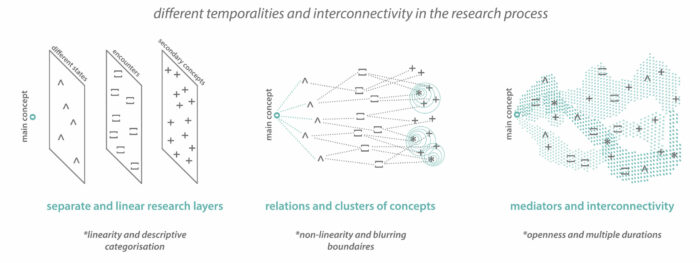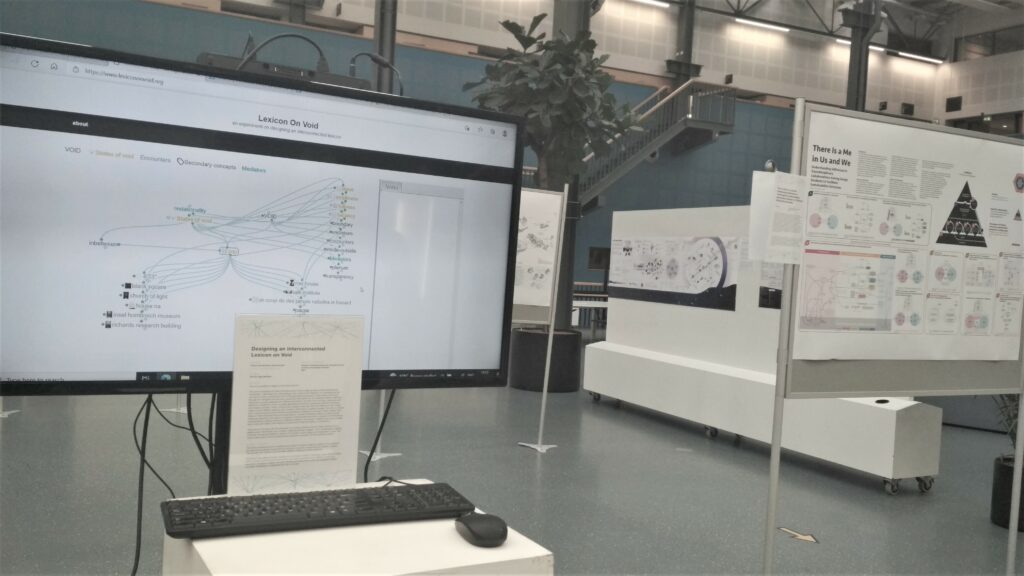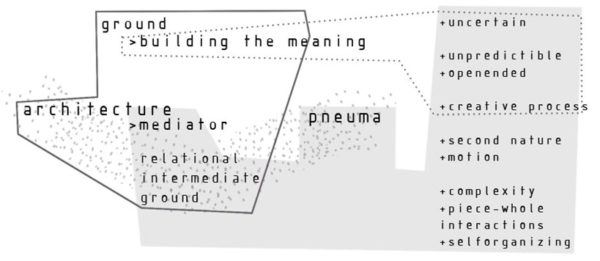towards an interconnected reading method: temporality of an architectural lexicon, 2023
This article aims to focus on specifically temporality of an open-ended research approach in architecture. It introduces an interconnected reading method and explicates the research layers and their relations through an architectural lexicon. Therefore, it deciphers an on-going PhD research called Architectural Lexicon on Void, which seeks to contribute to building a new architectural vocabulary. Based on the approach of interconnectivity, it interprets the lexicon as a means of “reading” and “understanding” the concept of void in architecture. In order to discuss temporality, the article touches the idea of openness by Eco and Deleuze, together with Bergson’s idea of duration. It considers temporality of this research process as an open whole which consists of multiple durations and studies the research layers within this frame.
Click here for the article.
*GRID – Architecture Planning and Design Journal , 6 (2) , 725-744 . DOI: 10.37246/grid.1211258
designing an interconnected lexicon on void, 2021
This work introduces an interconnected lexicon that builds an open-ended architectural vocabulary. It generates an ongoing PhD research method on understanding the concept of void in architecture with an interdisciplinary approach. It discusses architecture through an intangible concept, and evolves into an interactive lexicon based on relational concepts adopted from different disciplines.
Click here for the abstract and exhibition material.
*RSD10 Relating Systems Thinking and Design Symposium, Delft.
architecture as an intermediate ground, 2013
The research examines the attribute of architecture within the pursuit of a solid ground. It analyses the “ground” from a conceptual aspect while trying to understand the attempt to support architectural ground with scientific methodology. A new way of understanding of ground can be mentioned with the concepts such as complexity, uncertainty and non-linear relations discovered by science and the debate of philosophy on ground, nature, freedom and ungroundedness. Besides comprehending these discoveries of science as its conceptual discourses and using “ungrounding” in philosophy, the research offers the “relational intermediate ground” which is seen as the potential of architecture. A solid ground is no longer valid for architecture. “Architecture as an Intermediate Ground” takes a “mediator” role which adopts its uncertain and unpredictable potentials.
Click here for the thesis.
*M.Sc. Thesis, Istanbul Technical University, Architectural Design Program, Advisor: Prof. Dr. Ayşe Şentürer
nonlinear studio approach in design education, 2012
Instead of a certain and definite design approach, a new perception which forms a dynamic relationship with an open-ended and unpredictable features should be taken into consideration. How does this approach reflect to the design education? How can design studios, which shape an important part of the design education, be discussed with this intention? In this paper, project design studios is criticized in the light of these questions. First, the theoretical background of the subject, such as “complexity” and “nonlinear systems”, is emphasized and the relationships of these concepts with the design process is discussed. The elements of a linear design studio process is questioned and reviewed to comprehend a nonlinear approach for design studios. The aim of this research is to emphasize the importance of design process and develop a new design studio education approach by asking new questions.
Click here for the paper.
*Proceedings of İÇMEK 2012 (Interior Architecture Education Congress), Istanbul.


